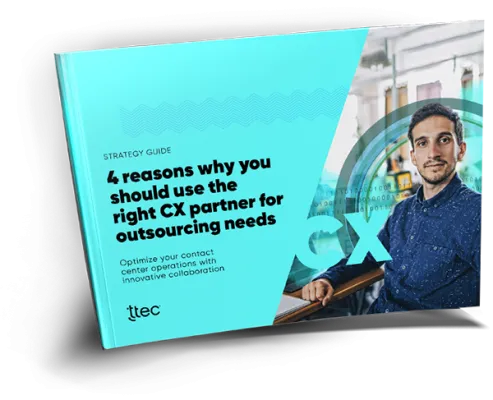In a year of change; Black Friday will likely be no different. It’s difficult to redefine how a holiday event, so typically associated with large crowds and spending, will be affected during a pandemic and an economic recession. At a close glance we are looking at a difficult scenario: well-known brands have closed doors, Rule of Six regulations are being put into place and customers are further gravitating towards online shopping. Brands need to adapt this Black Friday to differentiate themselves, grow revenue and increase customer loyalty.
1. Convenience will be a competitive differentiator
Your online presence will matter more than ever. Back in December 2019, more than half (52.5%) of UK residents preferred online shopping due to its convenience, according to a WePack survey. Today, convenient online shopping has become a necessity. UK retail ecommerce sales will account for 27.5% of total retail sales this year—up from 21.8% in 2019, reports eMarketer.
Online shopping may be a safer alternative to brick-and-mortar sales but it could come with a different cost. Consumers flooding to websites for sales and new products can break down existing systems. Just this month PlayStation 5 release crashed several major retail websites within hours of release. The brand differentiators during the holiday season are those who can deftly manoeuvre between channels to meet surging customer volumes at any point of the journey.
Messaging is a powerful tool that provides a seamless and consistent single point of communication. A universal super associate can master every omnichannel interaction and handle all levels of complexity to seamlessly pick up and route conversations across channels.
Make it easy for shoppers to get fast answers to their questions by enabling conversations anytime, anywhere, on any mobile device. A recent survey by LivePerson showed that 68% of shoppers would trust a retailer more if they were able to contact associates via messaging for advice, questions and assistance with purchasing. Work with a partner that can quickly stand up sales and service messaging specialists on popular platforms like Facebook Messenger, WhatsApp, and SMS to enable retailers to engage and support customers where they are.
2. AI will lead the way
Competitive prices and increased digitilisation means organisations will have to find more ways to automate their experiences. Artificial intelligence (AI) will be essential for handling frequent, easy to solve questions that consume associates time. By leveraging analytics and knowledgebases during new releases and sales events, organisations can provide information to customers on the go.
Meanwhile for concerns that require the human touch, AI can act as virtual assistant for associates to draw out relevant suggestions based off thousands of previous interactions.
It will be crucial to balance out humanity and automation this holiday season to find the best fit for customer needs. That’s why the two parties working in tandem is so crucial.
For example, when a client lacked self-service options, we deployed TTEC’s Customer Assist bot on the company’s website to handle inbound requests from customers, 24x7. The chatbot seamlessly integrated into the CRM platform to update lead/contact information and integrated into the ACD platform so seamless hand-off to associates can be initiated when needed.
With the implementation of the chatbot and a sophisticated omnichannel strategy, the company saw a 30% increase in digital conversions, 15% increase in total leads created, and 46% reduction in lead to opportunity cycle time.
3. Collaboration is a necessity
Without traditional doorbusters and other in-store events during Black Friday, retailers will have to be more targeted and creative in getting customers to open their wallets. Rather than throw various campaigns at customers to see what sticks, a structured process should be put in place to develop innovative ideas across key stages of the customer journey. This can be done in a series of brainstorming sessions involving stakeholders across the organisation and customers with the purpose of creating several ideas to select from.
Start by planning to eliminate or mitigate causes of negative experiences that can be turned into positive experiences, and in turn, trigger an emotional connection. Where might feelings of stress, confusion, anxiety, and frustration emerge during the customer journey that can be preemptively solved? If customers often call customer service to enquire about their package’s status, for instance, work with marketing and IT to include a tracking solution and make sure customers are aware of it.
4. Become more than a shopping experience
Each year we find wonderful examples of companies who set aside a time focused on consumerism and dedicate it to various causes. Consumers increasingly want to shop with companies that have a sense of purpose, and in hypercompetitive economy with a tighter budget people want to choose organisations with a greater impact.
A global study found that shoppers are four to six times more likely to buy from, trust, champion and defend companies with a strong purpose. In the wake of COVID-19, many high-profile brands showed their support to the National Health Service by donating thousands of needed medical supplies.
A good story that makes a case for slower—but Earth-friendly—delivery options, or highlights the value of a limited inventory, for example, can cut through the noise created by other retailers during the holiday season.
Crafting a compelling narrative doesn’t require a massive budget during tighter financial times, but it’s also not a one-and-done project. Once you’re satisfied with a brand story for the holiday season, continue to check in with target customers and employees to ensure that your brand story and company decisions are aligned with their values and priorities.
Massive sales and discounts may bring plenty of attention to your brand, make the most out of it and show what you are worth.
Find the right innovation partner
Focus on your core strengths and let a partner handle the rest. At a time when retailers large and small are fighting for survival, standing out requires an even greater focus on the end-to-end, digital-first customer experience. However, most companies are operating on razor-thin margins and resources. Working with an outsource partner that has the knowledge, technology, and staff to fill those gaps provides numerous cost and innovation benefits while improving a brand’s customer experience.
Black Friday’s moment of change has been a long time coming. Increased digitilisation and longer sales events have already transformed what this event meant years ago-but never on this scale. That’s why a strong omnichannel strategy and technology that brings out the best in your employees is the key to staying atop the competition this year.














